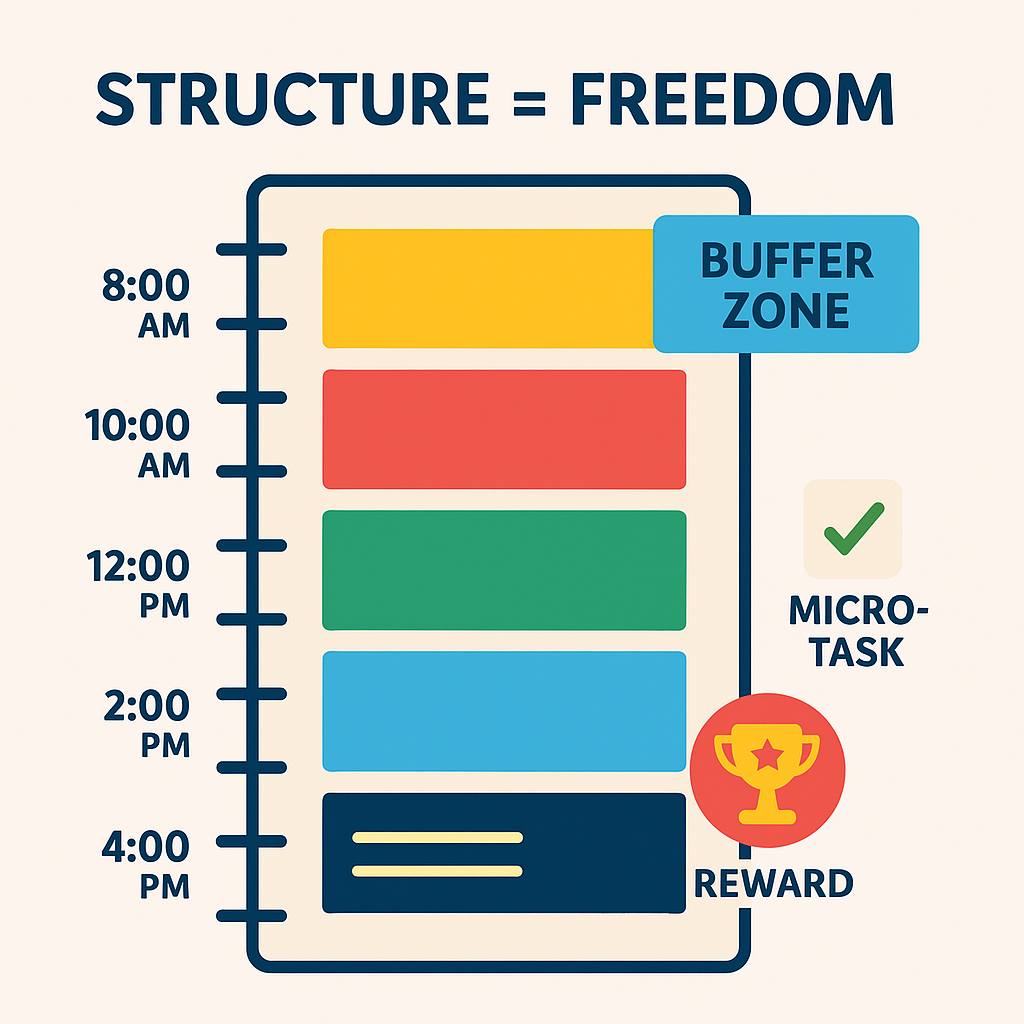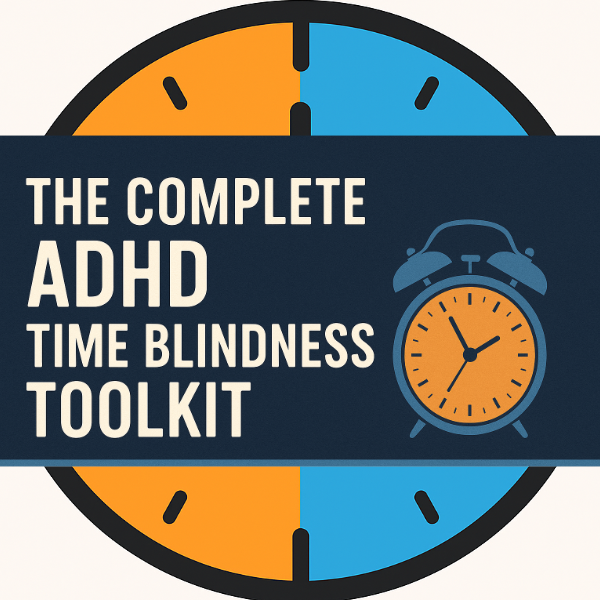ADHD Time Blindness: Practical Tools & Techniques That Actually Work
If you live with ADHD, you already know how frustrating time blindness can be. You lose track of hours in hyperfocus, underestimate how long tasks will take, and feel like time moves at a completely different speed. The truth is, ADHD brains process time differently—and traditional time management strategies often fail. In this guide, we’ll explore evidence-based tools designed specifically for ADHD time perception challenges, so you can work with your brain, not against it. This occurrence is called ADHD time blindness.
What is ADHD Time Blindness and Why Does it Happen?
ADHD time blindness is the inability to accurately sense the passage of time. This isn’t laziness or lack of discipline—it’s rooted in brain chemistry, executive function patterns, and dopamine regulation.
Neurodivergent brains often struggle with:
- Inconsistent internal clocks
- Difficulty switching between tasks
- Overestimating or underestimating time windows
Recent research shows that ADHD brains process rewards and deadlines differently, leading to chronic lateness, missed deadlines, and high stress.
 Visual Timers and Time Tracking Tools for ADHD Time Blindness
Visual Timers and Time Tracking Tools for ADHD Time Blindness
For ADHD time blindness, visual feedback is critical.
Top tools include:
- Visual analog clocks placed in key areas of your workspace
- Disappearing timers like Time Timer® to “see” time slipping away
- Digital countdown apps that sync across devices
Pro Tip: Place timers where you can’t ignore them. A wall-mounted analog clock or large digital display can keep your brain anchored to reality.
Using External Time Anchors & Environmental Cues
Instead of relying on your brain to track time, outsource it.
Examples:
- Play specific playlists for fixed durations
- Use smart lights that change color as the day progresses
- Schedule “reset cues” like standing up at the end of a podcast episode
This method helps you align activities with external events rather than unreliable internal perception.
Accountability Systems & Body Doubling
Body doubling is a game-changer for ADHD productivity. Whether virtual or in person, simply having someone present can:
- Keep you on task
- Provide gentle check-ins
- Prevent hyperfocus “time warps”
Pair this with shared calendars or check-in messages for maximum effect.
NLP Techniques & Future Pacing for Time Awareness
Neuro-Linguistic Programming (NLP) techniques like future pacing visualization help your brain feel future deadlines more concretely.
You can:
- Visualize completing a task at a specific time
- Mentally “walk through” the steps with an internal clock
- Use sensory grounding techniques like the 5-4-3-2-1 method to refocus
Movement & Rhythm to Regulate Brain Chemistry
ADHD time blindness is tied to dopamine fluctuations. Physical movement boosts dopamine, norepinephrine, and serotonin—helping recalibrate your internal time sense.
Effective strategies:
- Walk or stretch every 30–45 minutes
- Use rhythmic activities (drumming, dancing, pacing)
- Combine physical breaks with visual time tracking
Rapid Reset Techniques for Hyperfocus Episodes
When hyperfocus hijacks your day:
- Set a recurring timer for hourly breaks
- Change your physical location to signal a shift
- Use an audio reset prompt (alarm or short song)
These micro-interruptions help prevent losing entire afternoons without realizing it.
Building Sustainable ADHD Time Management Habits
Instead of willpower, use system design:
- Automate recurring tasks
- Link habits to existing routines
- Keep tools in visible, accessible places
This creates a supportive environment where the “path of least resistance” aligns with your time goals.
Why Traditional Time Management Fails ADHD Brains
Most productivity systems are built for neurotypical time processing. ADHD brains:
- Respond differently to delayed rewards
- Struggle with invisible deadlines
- Need externalized time cues
That’s why ADHD-specific tools are essential—they’re designed for your neurology.
Resources & Next Steps for ADHD Time Blindness
Want the complete toolkit with timers, NLP guides, and daily trackers?
Download the full ADHD Time Blindness Toolkit here: https://didpublishing1.gumroad.com/l/lvuef



Leave a Reply